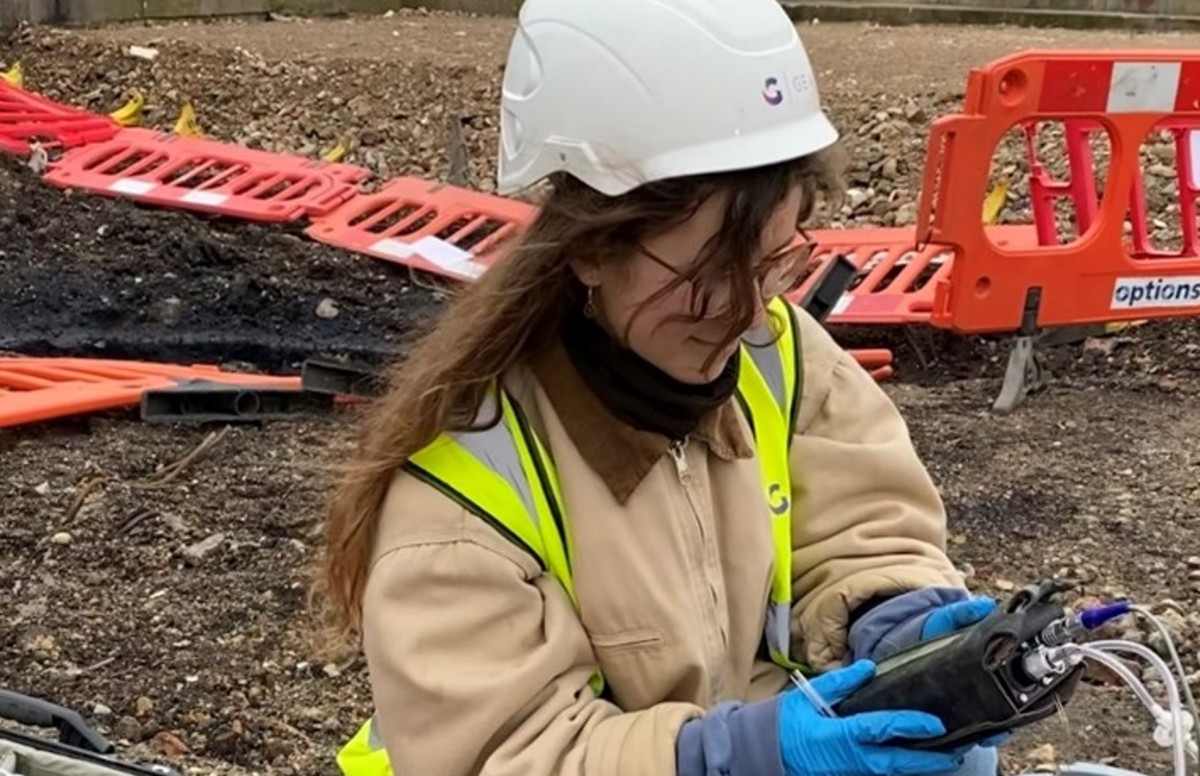The Geotheta Ideas
The Geotheta Ideas
Blog Article
Some Ideas on Geotheta You Need To Know
Table of ContentsThe Single Strategy To Use For GeothetaThe Best Guide To GeothetaTop Guidelines Of GeothetaThe Best Strategy To Use For GeothetaMore About Geotheta

They carry out site examinations, gather examples, carry out research laboratory tests, and examine data to evaluate the suitability of the ground for building tasks - Engineer of Record. Based on their findings, geotechnical designers provide recommendations for foundation layout, incline security, maintaining frameworks, and mitigation of geotechnical threats. They work together with other specialists, such as architects, architectural designers, and building and construction teams, to ensure that geotechnical considerations are incorporated into the general task layout and application
By assessing the actions and homes of dirt and rock, they can determine potential geotechnical hazards such as landslides, dirt settlement, or incline instability. Their know-how assists protect against failings or mishaps that could threaten lives and home. Right here are some comprehensive responsibilities and responsibilities of a geotechnical engineer: Site Investigation: Geotechnical designers conduct site investigations to collect data on subsurface problems.
They interpret the information to understand the residential or commercial properties and habits of the dirt and rock, including their strength, leaks in the structure, compaction characteristics, and groundwater conditions. Geotechnical Analysis and Design: Geotechnical designers examine the data accumulated throughout website investigations to examine the security and suitability of the website for building and construction projects. They perform geotechnical computations and modeling to evaluate variables such as bearing ability, negotiation, incline security, lateral earth stress, and groundwater circulation.
Facts About Geotheta Revealed
Foundation Design: Geotechnical designers play an important function in creating structures that can securely sustain the desired framework. They assess the dirt problems and load requirements to establish the ideal foundation kind, such as superficial structures (e.g., footings), deep foundations (e.g (https://geotheta.weebly.com/)., piles), or specialized methods like soil enhancement. They take into consideration aspects such as negotiation limitations, birthing capability, and soil-structure communication to establish optimal structure designs
They assess building strategies, display website activities, and carry out field assessments to confirm that the style referrals are followed. If unpredicted geotechnical problems develop, they assess the circumstance and supply recommendations for remediation or modifications to the layout. Threat Assessment and Reduction: Geotechnical designers examine geotechnical hazards and risks connected with the project website, such as landslides, liquefaction, or dirt disintegration.

Collaboration and Interaction: Geotechnical designers function closely with various other experts involved in a project, such as designers, structural designers, and building teams. Efficient interaction and partnership are necessary to integrate geotechnical factors to consider right into the general job design and construction procedure. Geotechnical engineers give technological proficiency, answer queries, and make sure that geotechnical requirements are fulfilled.
4 Easy Facts About Geotheta Explained
Right here are some sorts of geotechnical engineers: Structure Designer: Foundation designers concentrate on designing and analyzing foundations for frameworks. They examine the soil conditions, load needs, and website qualities to figure out one of the most ideal structure kind and style, such as shallow foundations, deep structures, or specialized methods like stack foundations.
They evaluate the aspects influencing incline stability, such as dirt homes, groundwater conditions, and incline geometry, and create approaches to stop incline failures and minimize threats. Quake Engineer: Earthquake designers concentrate on evaluating and designing structures to endure seismic pressures. They assess the seismic hazard of a website, assess dirt liquefaction possibility, and develop seismic style standards to make sure the security and durability of frameworks during quakes.
They perform area screening, collect examples, and analyze the gathered data to identify the soil properties, geologic developments, and groundwater conditions at a website. Geotechnical Instrumentation Designer: Geotechnical instrumentation engineers concentrate on monitoring and gauging the actions of soil, rock, and frameworks. They install and preserve instrumentation systems that monitor factors such as dirt negotiation, groundwater degrees, incline movements, and architectural displacements to assess efficiency and supply early cautions of prospective concerns.
The Definitive Guide to Geotheta
They carry out examinations such as triaxial examinations, debt consolidation examinations, straight shear tests, and permeability examinations to gather data for geotechnical evaluation and style. Geosynthetics Designer: Geosynthetics designers specialize in the design and application of geosynthetic products, such as geotextiles, geogrids, and geomembranes. They use these materials to boost dirt stability, enhance slopes, web link offer water drainage options, and control disintegration.
They have a tendency to be investigatory people, which indicates they're intellectual, reflective, and inquisitive. They are curious, methodical, rational, logical, and rational. Some of them are also social, suggesting they're kind, generous, cooperative, patient, caring, useful, empathetic, sensible, and friendly - Geo Tech Engineering.
In the workplace atmosphere, geotechnical designers utilize specialized software tools to carry out estimations, develop designs, and assess data. They prepare records, evaluation job specs, connect with customers and team participants, and coordinate job activities. The office setup gives a conducive setting for research, evaluation, and partnership with other professionals entailed in the job.
The 5-Minute Rule for Geotheta
They often visit task websites to perform site investigations, assess geotechnical problems, and collect data for evaluation. These brows through involve taking a trip to different areas, often in remote or tough surfaces. Geotechnical engineers might perform soil tasting, conduct examinations, and monitor construction activities to ensure that the geotechnical elements of the task are being implemented appropriately.
Geotechnical designers also function in specialized geotechnical laboratories. In these facilities, they carry out experiments, execute tests on soil and rock examples, and analyze the design residential or commercial properties of the materials. Geotechnical research laboratory designers work extensively in these atmospheres, taking care of screening devices, operating tools, and recording information. They team up with various other research laboratory personnel to make sure exact and dependable screening outcomes.
Report this page